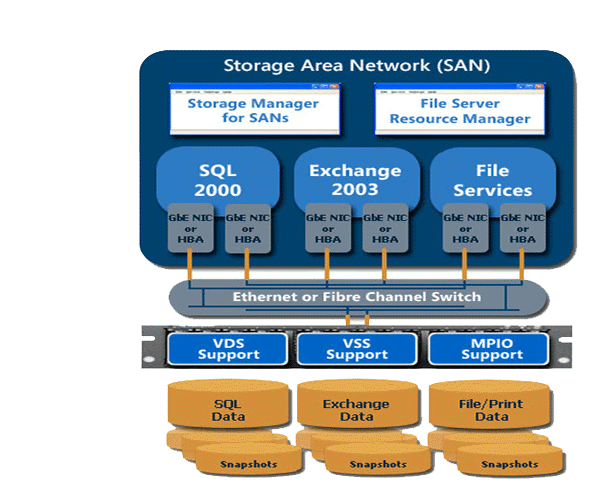
Large enterprises have long benefited from storage area network (SAN) technologies, in which storage is uncoupled from servers and attached directly to the network. By sharing storage on the network, SANs enable highly scalable and flexible storage resource allocation, high efficiency backup solutions, and better storage utilization.
SAN Complexity
The drawback to SANs is that they have traditionally been difficult to deploy and maintain. Why are SANS so complicated? Simply put, the difficulties arise from managing the devices that connect to the storage network. In large enterprises with vast storage needs, managing the activity of storage devices from the server Host Bus Adapters (HBAs) to the switches in the middle, to the storage arrays, as well as monitoring the physical network, is a full time job. Ensuring high data availability and optimized storage network performance requires a different set of skills than those needed for managing storage on a server by server basis.
Although connecting to a storage network using well known IP technologies is now a viable option using iSCSI, for the last decade the prevailing storage technology has been Fibre Channel, which offers high speed storage networking and delivers on a host of SAN-based benefits. The downside to Fibre Channel for small and medium businesses (SMBs) is that Fibre Channel management requires specialized expertise that the network or system administrator typically does not have.
The diagram below represents a typical SAN:

SANs in the Small-to-Medium Business Space
Managing storage complexity in the immediate future will remain very much part of the daily experience of the storage administrator of large SANs. But for smaller organizations that lack a dedicated storage administrator, SANs are starting to emerge as a viable storage solution. One reason for this change is the advent of iSCSI SANs with which storage can be accessed directly over an IP network. With built-in support for iSCSI protocols in the Windows Server platform, Microsoft has helped drive iSCSI SAN adoption, so that a new generation of system administrators can capitalize on their IP and LAN expertise in delivering SAN solutions to their enterprise. A second force, that is especially important with Fibre Channel interconnects, is an emerging vendor focus on developing products designed to deliver a simpler out-of-the-box SAN solution to the small to medium business (SMB) market.
Making SANs Simpler
Can Fibre Channel SANs be simplified and continue to deliver the advantages of SANs? They can if you approach the problem correctly. This approach consists not of removing the complexity inherent to SANs, because you still need the same components that makes a SAN work-components like HBAs, Fibre Channel wiring, switches, and controllers. Instead simplifying SANs consists of hiding the complexity, and streamlining the steps necessary for successful setup by limiting decisions about features to those relevant to the small business, for example performance tuning.
Microsoft's Simple SAN Initiative
To successfully hide complexity, each component of the SAN solution must contribute to the overall goal of a simplified customer experience. Using the SAN-friendly Windows Server 2003 platform of storage technologies, Microsoft is working with its storage partners to help drive the creation of simple SAN solutions for Windows Server 2003 users.